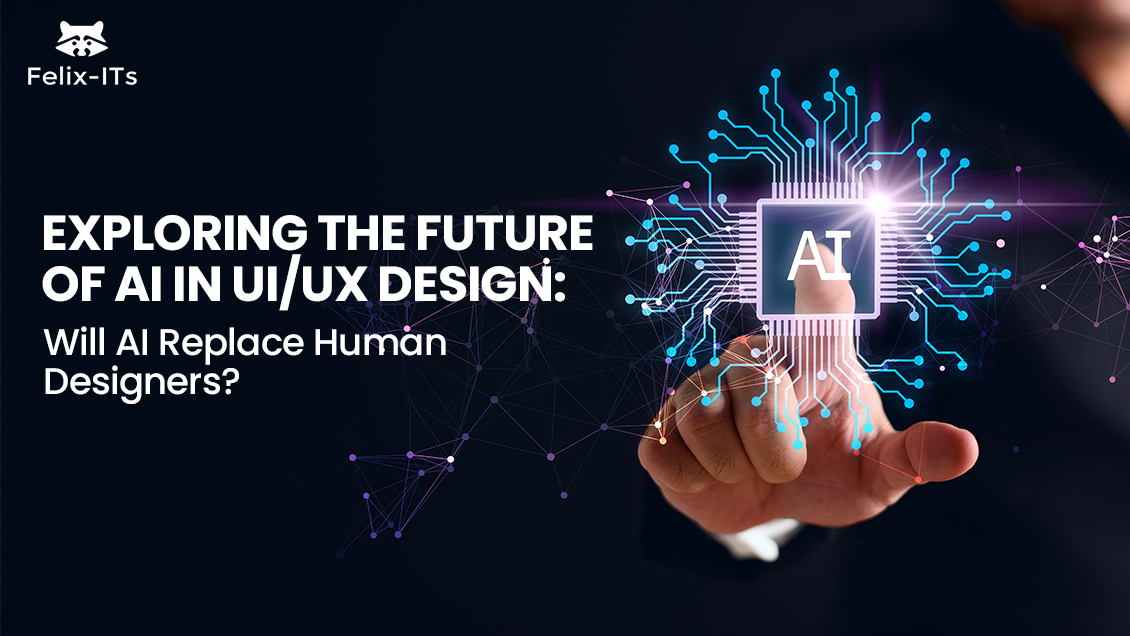Artificial intelligence (AI) is rapidly advancing, and its applications are becoming more prevalent in various industries. The field of UI/UX design is no exception, as AI is being used to optimize user interfaces and improve the overall user experience. However, as with any new technology, there are questions about the potential impact of AI on the field of UI/UX design. In particular, there is a concern that AI may replace human designers. In this blog post, we will explore the potential uses of AI in UI/UX design, the limitations of AI in this field, and the implications for the job market for UI/UX designers.
One of the ways AI is being used in UI/UX design is to optimize user interfaces. Machine learning algorithms can be used to analyze user data and make recommendations for improving the interface based on that data. For example, a machine learning algorithm could analyze data on which elements of a website are most frequently clicked on and make recommendations for rearranging the layout to make those elements more prominent. This can save designers a lot of time and effort, as they don’t have to manually analyze data and make changes to the interface.
Read More: Guide to building a freelance UX Design career
Another potential use of AI in UI/UX design is in the field of natural language processing (NLP). NLP is the ability of a machine to understand human language, and it is being used to improve conversational interfaces. For example, a chatbot powered by NLP could understand and respond to user queries in a more natural and human-like way. This can make conversational interfaces more user-friendly and increase engagement with the interface.
However, despite the potential benefits of AI in UI/UX design, there are also limitations to consider. One limitation is that AI is currently unable to fully understand and replicate human intuition and creativity. While AI can analyze data and make recommendations, it cannot come up with new and innovative ideas on its own. This is an area where human designers are still needed.
Read More: Good Times Rolling for UI/UX Design – Join the Bandwagon Now!
Another limitation is that AI can perpetuate biases in interfaces if the data it is trained on is biased. For example, if an AI algorithm is trained on data that is predominantly from one demographic, it may make recommendations that are not inclusive of other demographics. This is an important ethical consideration for designers to keep in mind when using AI in their work.
The concern about AI replacing human designers is understandable, but it is important to remember that AI is a tool, not a replacement. It can be used to make designers’ jobs easier and more efficient, but it cannot replace the creativity and intuition of human designers. However, it is also important to keep in mind that the job market for UI/UX designers is likely to change in the future, and designers will need to adapt and upskill to work alongside AI.
One of the ways that designers can adapt to work alongside AI is by learning how to use AI tools. This will enable them to use AI to optimize their work and make it more efficient. Additionally, designers should also focus on developing their creativity and intuition, as these are areas where AI is currently unable to replace human designers.
Read More: Embracing the Future of Digital Design: UI/UX Trends and Opportunities in [2024]
In conclusion, the field of UI/UX design is rapidly evolving, and AI is playing an increasingly important role in this evolution. While there are concerns about AI replacing human designers, it is important to remember that AI is a tool that can be used to make designers’ jobs easier and more efficient. However, designers will need to adapt and upskill to work alongside AI in the future. Additionally, as AI is being used more often, designers should keep in mind the ethical considerations and limitations of AI in their work.
DALL-E, a model that can generate images from text descriptions, can be used to generate user interface elements or even entire layouts based on descriptions provided by designers. This can save designers a lot of time and effort, as they don’t have to manually create every element of an interface.
Another way that designers can adapt to work alongside AI is by developing their skills in areas that AI is currently unable to replace. For example, designers should focus on creating interfaces that are inclusive and accessible for all users, including those with disabilities. Additionally, designers should focus on creating interfaces that are emotionally engaging and create a positive user experience. These are areas where AI is currently unable to replace human designers, and where human designers can add the most value.
Read More: Have UX Design Skills? Here’s How You Can Monetize Them…
Finally, it is important to keep in mind that the field of UI/UX design is constantly evolving, and designers should always be willing to adapt and learn new skills. As AI continues to advance, new possibilities will open up for designers to use AI in their work, and designers should be open to exploring these possibilities. Additionally, designers should also keep an eye on new technologies and trends that may impact the field of UI/UX design.
In conclusion, AI is an important tool for UI/UX designers, and it can be used to optimize user interfaces, improve the overall user experience, and make designers’ jobs more efficient. However, it is important to keep in mind the limitations of AI, and to focus on developing skills that AI is currently unable to replace, such as creativity, intuition, and inclusivity. Additionally, designers should keep an eye on new technologies and trends that may impact the field of UI/UX design. With OpenAI, the possibilities are endless.


